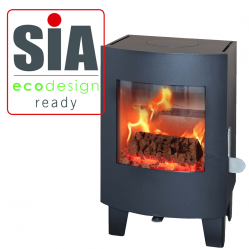Stoves > Ecodesign Stoves

Ecodesign Ready Stoves
Are stoves bad for the environment? This has been one of the most controversial and frequently asked questions of late. The answer is simple- no, not if they are used correctly. Ecodesign Ready is a new from of European Legislation coming into effect in the UK in 2022 and ensures that all stoves on the market after this date conform to rigorous testing by the Stove Industry Alliance (SIA), to reduce emissions and particulates for a cleaner environment. The programme has full support from DEFRA, HETAS and Wood Sure, which are governing bodies helping to regulate the correct install and use of stoves in the UK. To help put this into perspective, an Ecodesign Ready Stove releases 90% less particulate emissions when compared to an open fire and 80% less when compared to a 10-year-old stove.
Will they put a ban on stoves? No. From the 1st of January 2022, only Ecodesign Ready Stoves will be available on the market. Stoves which have not passed the rigours emissions testing set by the SIA will not be allowed to be sold and will be withdrawn from the market. What will be banned is the types of fuel available for burning, such as wet wood (non-kiln dried or seasoned wood) and household coal with a high sulphur content.
Here at Firebox Stoves, we can help you understand the reasons behind this new legislation and its impact on the stove industry, and help you find the best Ecodesign Ready stove for your home. We can also teach you how to get the best out of your new stove, through correct use and fuel selection, helping to improve efficiency and reducing your impact on the environment. We stock a wide range of the best Ecodesign Ready Stoves, many of which have been released early, well ahead of the 2022 deadline.
